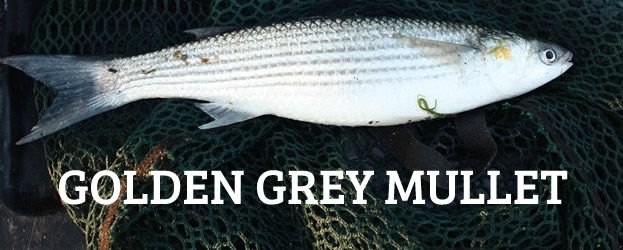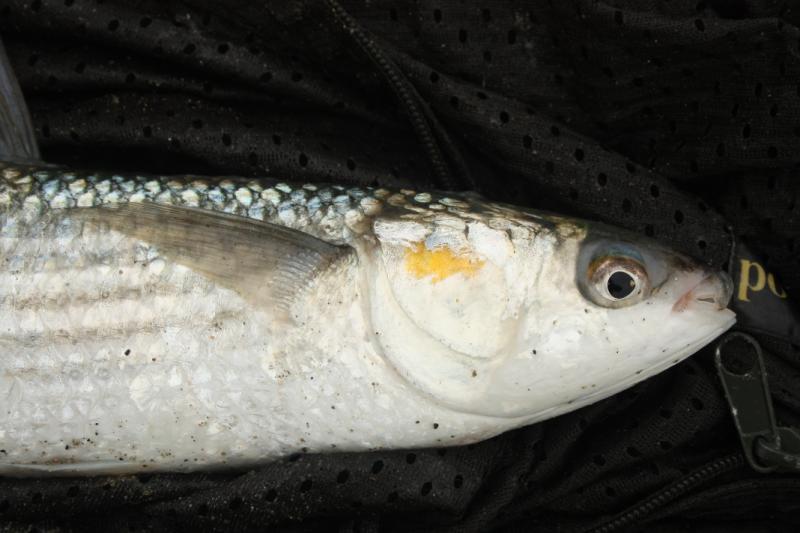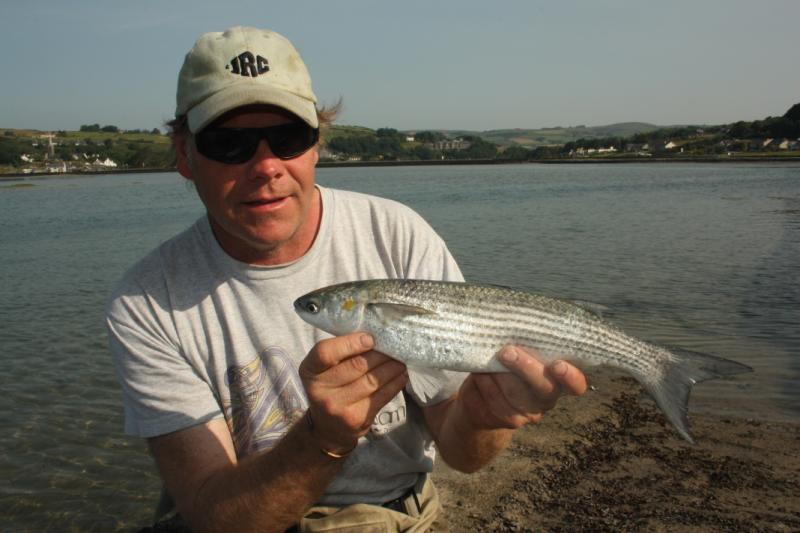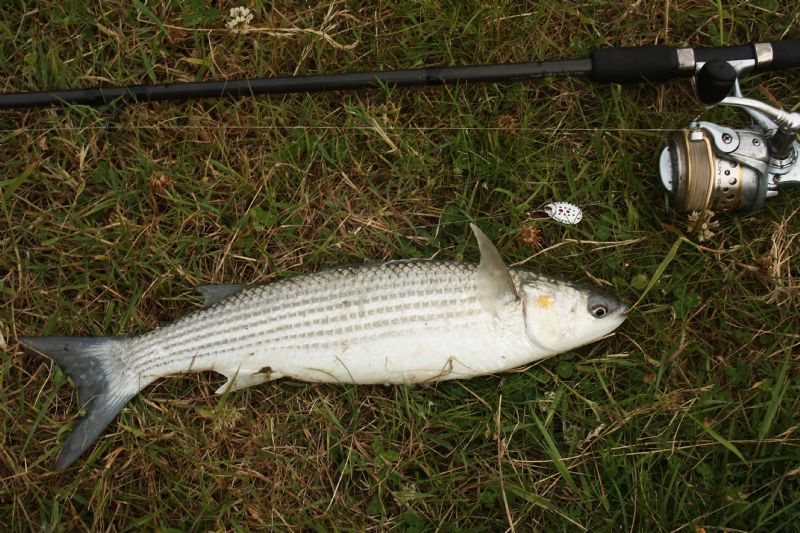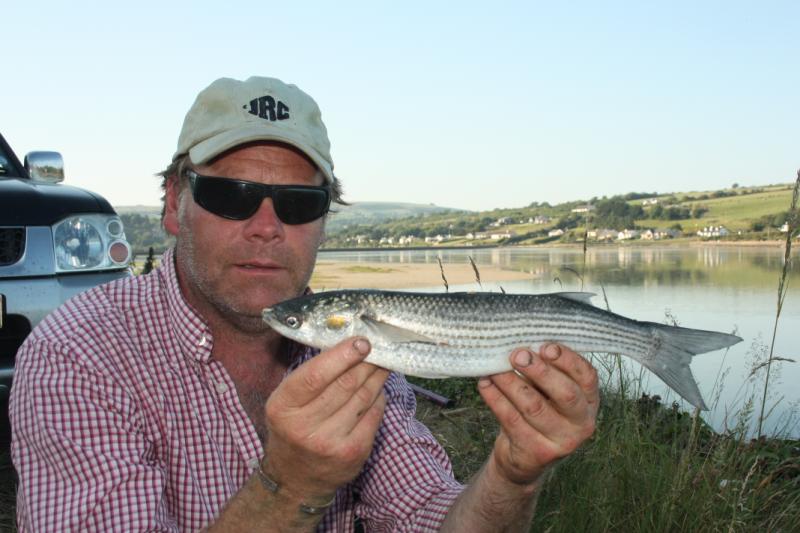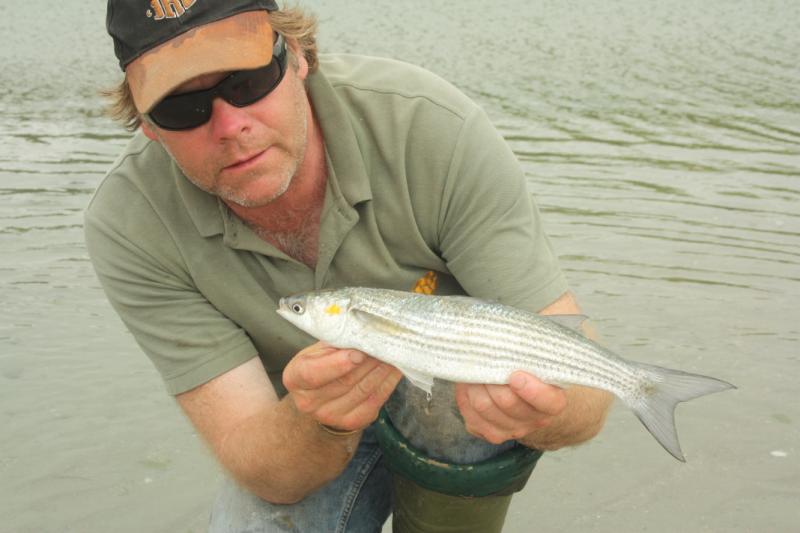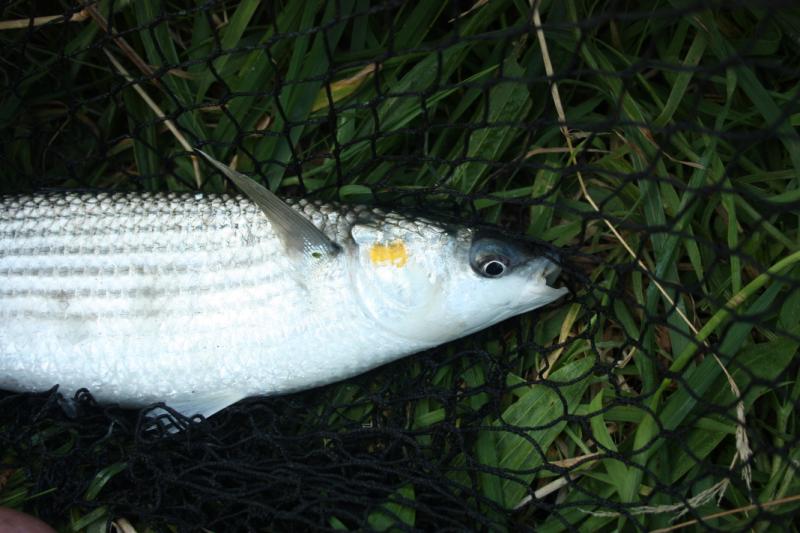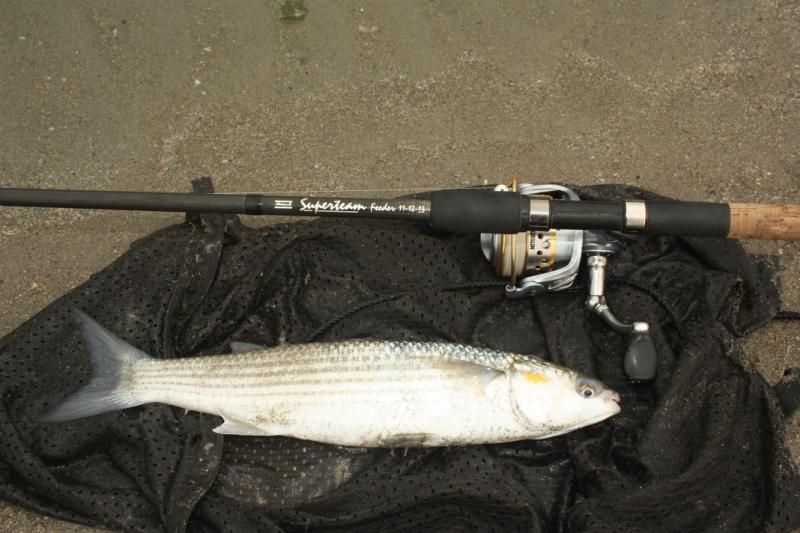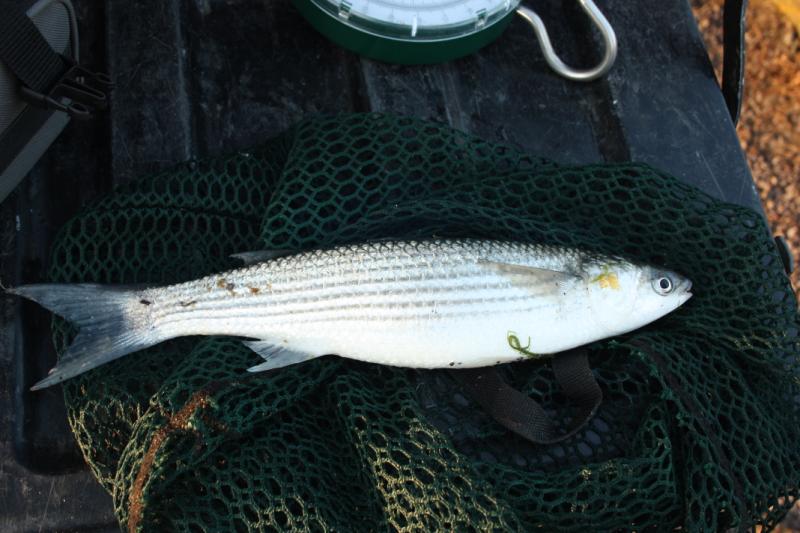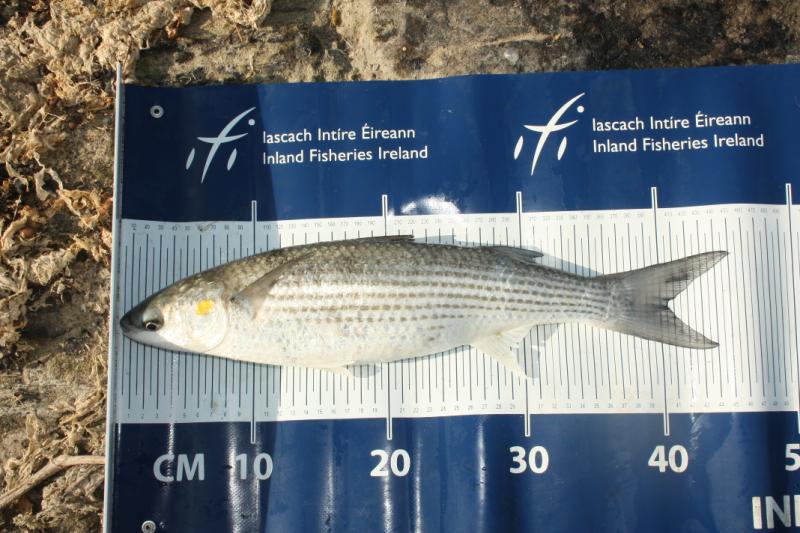Mullet, Golden Grey
Golden Grey Mullet (Liza aurata)
Irish Record 1.52 kilo taken on 15.08.2018 by Stephen O'Neill at Cork Harbour.
Specimen 1.5lb or 0.68 kilo
Identification
Golden Grey Mullet are our smallest of the three Grey Mullet species in Ireland. They are very similar in most ways but are mainly distinguishable by the bright yellow patch on either gill cover. They are generally slimmer than the other two species, and have longer, slimmer pectoral fins. There is usually an obvious blue shimmer of colour that runs along each flank between the silver and black of the back.
The butter yellow spot on the gill cover and the narrow, pointed pectoral fin
Where to catch
As with Gilthead Bream, the Golden-Grey Mullet species is a relatively recently arrival to the southern shores of Ireland. It is a warm-water fish, and as it has increased in both population and distribution, Ireland has been fortunate to receive this smaller member of the true Mullet family. It is now widespread throughout the southern and western parts of Ireland and the UK.
I have heard reports of “Goldies” being caught in the north, but would be un-able to verify this, although I see no reason why stragglers will not make their way up the coast during exceptionally warm summers. However, if you wish to specifically target a Golden-Grey, head for the warmer waters of Southern Ireland. From Dungarvan on the south-east coast, and further south and west including Cork Harbour, most coastal venues of West Cork and on into Kerry. Almost every estuary, sheltered bay and surf beach has populations of Golden Greys. Sometimes small pods of fish can be seen, and at other times, shoals by the thousand!
An Irish Specimen Golden-Grey Mullet, Clonakilty
When to catch
Being a warm water species, the bulk of the shoals arrive in late spring, again depending on sea temperature, and remain in varying numbers throughout summer and into late autumn.
Bait
Although some Golden Grey Mullet specimens are reported to have been taken on artificial baits such as small jelly worms, the vast majority fall to ragworm. In particular, the small harbour rag worm or “maddies” as they are known. A few have been caught on lugworm and some anglers have successfully tempted the odd fish on the fly, which would be superb fun.
Attractor spoon seen in photo will sometimes prompt a strike
Methods
For almost guaranteed results, and a method that is visual and exciting, the optimum tactic is spinning a small, baited Mepps rotating blade or similar. Baited with two or three small ragworm, Golden Grey Mullet will follow the baited spoon, nipping at the ragworm on the retrieve. Sometimes speeding or slowing the retrieve will tempt a fish into taking the bait. This is similar to the method when targeting Thin-Lipped Mullet. When fair sized shoals are present, it is not unusual to see anywhere up to a dozen Mullet following the spinner! The exciting part is hoping a larger specimen grabs the bait before one of the numerous smaller fish.
Can also be taken fishing static harbour rag below a bubble float or on standard freshwater quiver-tip tactics when cast amongst shoals.
Articles
http://www.angling-ireland.com/a_mullet__grand_slam_in_west_cork
http://www.angling-ireland.com/west_cork_mullet_good_medicine




